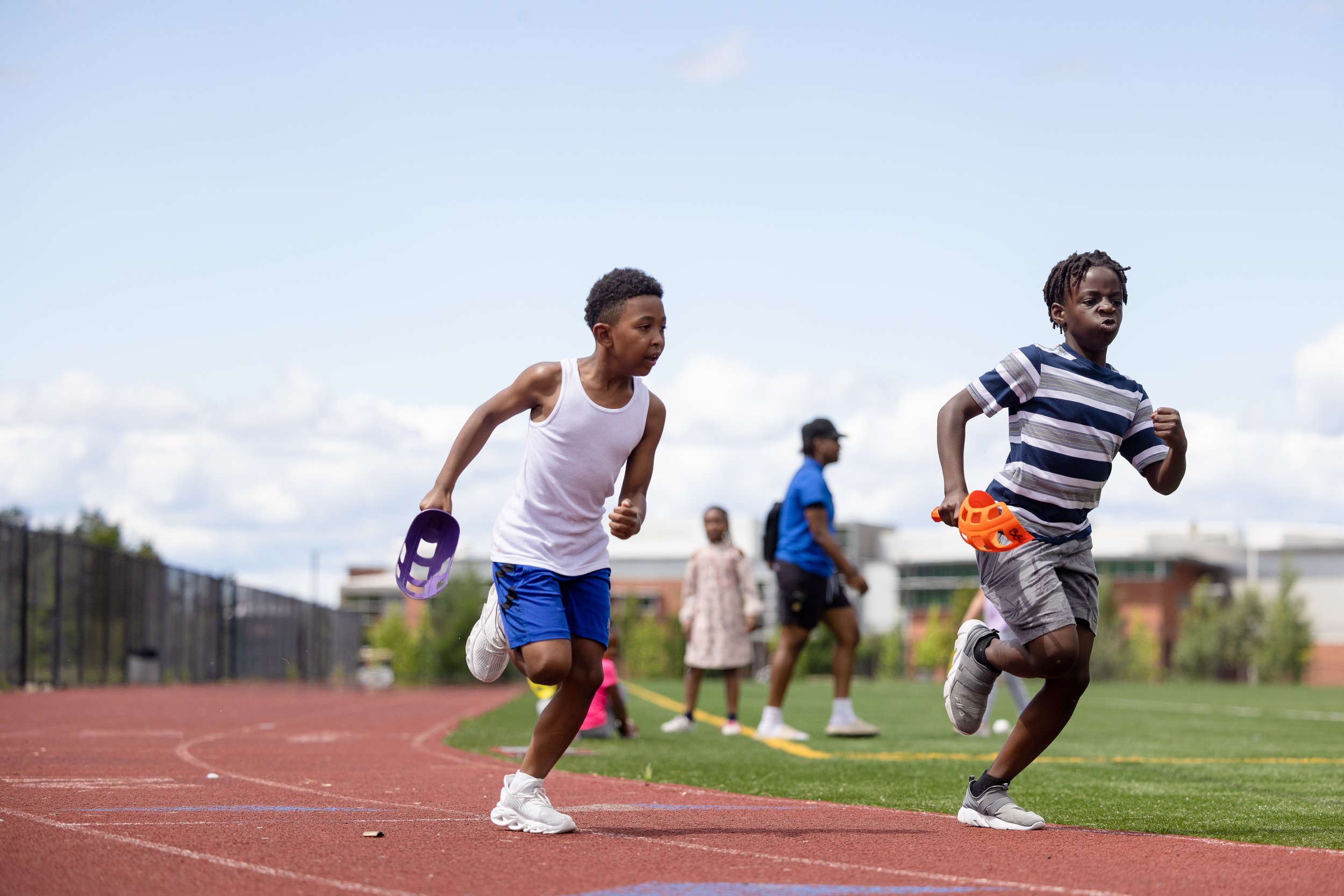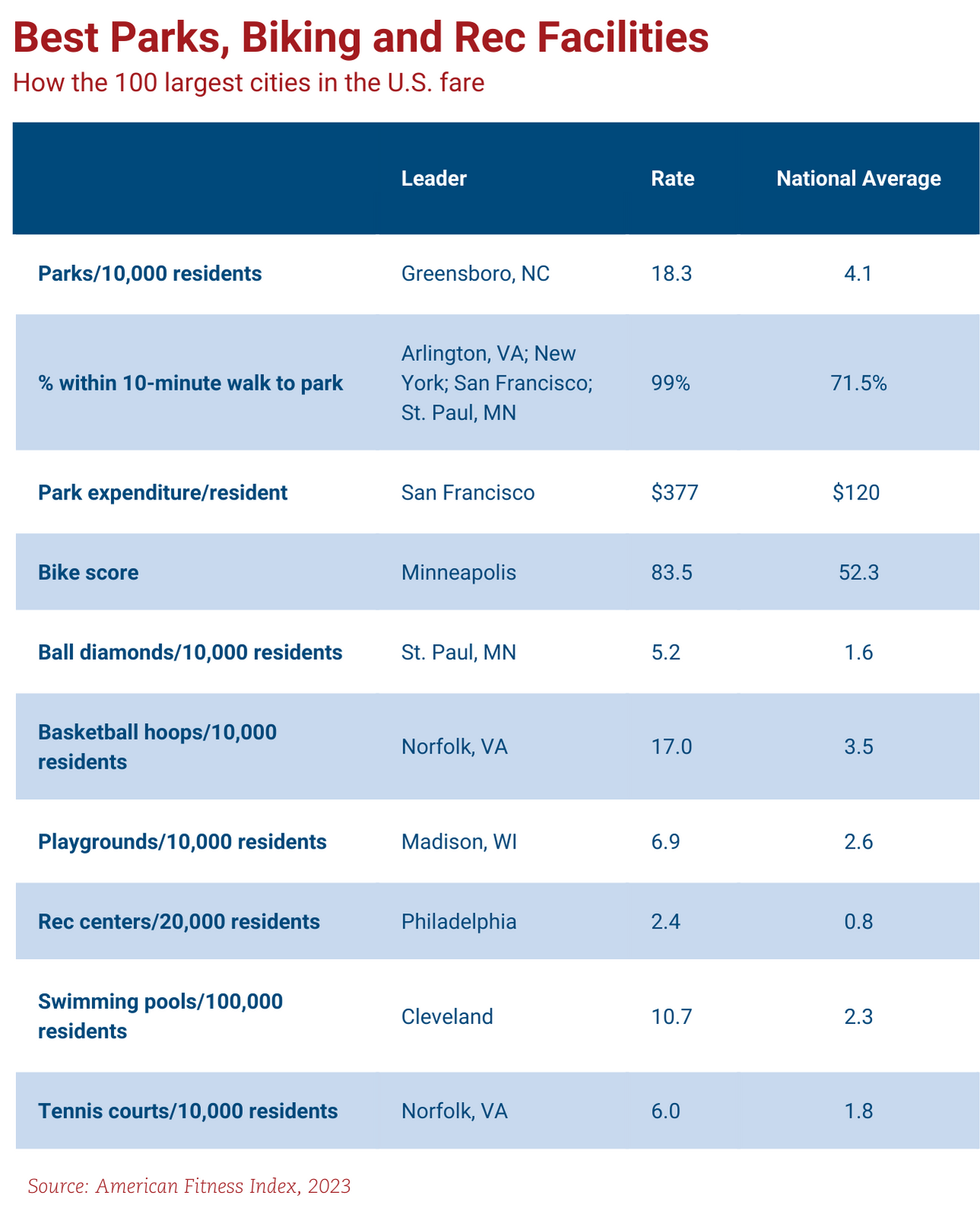Health Trends
Increased focus on mental health in sports and ACL knee injuries were among the health developments in 2023. The trends below come from the Aspen Institute’s State of Play 2023 report, courtesy of interviews conducted with leaders in the youth sports space, data analyzed by the Project Play team, or articles and research produced by other entities.
Top 5 Physical and Mental Health Trends
1
Youth connect increased physical activity to better mental health. For the first time in an Aspen Institute community State of Play youth survey, these two critical health areas were directly tied together. Children in the Tacoma, Washington area who are physically active reported more excitement, happiness and motivation, and those who are inactive reported greater nervousness, anxiety, worry and depression.
The analysis compared the number of days youth in Pierce County, Washington reported 60 minutes of daily physical activity in the last week with how frequently they felt certain emotions over the prior two weeks. For example, 25% of youth who said they had zero days of physical activity reported feeling depressed or hopeless nearly every day, more than twice the rate (11%) of those who reported being active every day. The results also suggested that youth who play an organized sport or physical activity have better mental health, although the differences were minimal compared to doing any form of physical activity.
State of Play Tacoma-Pierce County recommended that the community use sports and recreation to help address the mental health crisis, such as coach training, aligning sports and recreation with existing local mental health efforts, and creating public awareness about mental health in youth sports. Many youth surveyed in Pierce County anecdotally described tremendous value to their mental health when playing sports and continued struggles when they can’t play, such as being cut from teams.
2
Many non-scholastic sports organizations lack basic athlete safety policies. Players Health, a youth sports insurance provider, reached this sobering and unsurprising conclusion about recreational and travel club organizations that differs from schools. Among the findings from a self-reported survey of 685 rec and travel sports organizations across the U.S.:
56% lack a policy governing one-on-one interactions between adults and minors. That’s a concern given that a reported 1 in 10 children in the U.S. are sexually abused before age 18, 90% know their abuser, and more than 80% of child sexual abuse occurs in one-on-one situations, according to research by UCLA.
Roughly 50% do not have a policy on athlete emergency care, such as return to play from concussion, cardiac arrest, heat illness, and lightning strikes.
47% of organizations do not require coaches and staff take abuse prevention training.
33% do not have a background check policy for coaches and staff (such as criminal or sex offender checks), or an appeals policy if a person gets denied work in the organization. The lack of an appeals policy opens organizations up to greater liability if sued.
13% lack a policy on prohibited conduct for staff, parents, players and referees. Without a documented policy that clearly communicates how to deal with inappropriate behavior, organizations accept greater liability risk when ejecting someone.
More elite sports programs carry these policies because they are well-funded and operate like for-profit businesses, while local recreation programs are “hit or miss,” said Tyrre Burks, CEO of Players Health. “Basketball is the worst sport in terms of policy implementation because grassroots basketball is the wild, wild west with no infrastructure. Next is football, which is a mess with so many 7-on-7 tournaments. Many tournament providers don’t require insurance or background checks for coaches. Just pay and you’re in.”
Players Health is attempting to create health and safety certification for youth sports organizations through audits that inform the public if organizational policies exist and are being implemented. Organizations receive insurance discounts from Players Health if they implement safety policies. “What we’re missing is getting parents to care enough to ask questions and hold organizations accountable to have standards,” Burks said. “Parents can’t have a voice if they don’t know what standards to hold the organization to.”
In a separate survey, 85% of Americans who participated in youth sports or who have children who have participated say it’s “very important” that coaches are trained in safety practices and undergo background checks. Another 13% said it’s “somewhat important.”
33%
Rec, travel sports and fitness organizations without a background check policy
3
Serious knee injury rates are increasing in high school sports. Tears of the anterior cruciate ligament (ACL), among the most devastating sports injuries and one that can carry physical and financial consequences into adulthood, increased 12% between 2007-08 and 2021-22, according to new research by Hospital for Special Surgery (HSS) and the Datalys Center. Girls soccer had the highest rates, followed by tackle football, girls basketball, and girls lacrosse.
The 2023 Women’s World Cup, with a rash of star players sidelined by ACL injuries, brought soccer into a national conversation about why ACL injuries are more common for females. Soccer will be a sport of focus for the new National ACL Injury Coalition, formed in 2023 by Hospital for Special Surgery (HSS) and the Aspen Institute, since female high school players suffer the highest rates of ACL injury and male players trail only football and lacrosse.
The Coalition aims to address deficiencies in neuromuscular control that lead to ACL injury. Neuromuscular training helps to improve lower body strength and control and allows athletes to change speed and direction safely. HSS studied more than 1,200 adolescent athletes who performed a series of fundamental tasks and found that up to 91% of participants demonstrated limited neuromuscular control of the knee, depending on the task performed.
Click image to download
Of the six male sports studied, basketball (63%) and lacrosse (60%) had the highest rate of ACL injuries occurring without contact. For female sports, lacrosse (82%) had a significantly higher non-contact rate than softball (60%), basketball (58%), volleyball (52%) and soccer (52%).
12%
increase in ACL knee injuries among high school athletes from 2007-08 to 2021-22
4
Fatty liver disease is now about as common for children as asthma. Researchers in the journal Clinical Liver Disease estimate that 5% to 10% of all U.S. children have nonalcoholic fatty liver disease, a condition that had only a handful of documented pediatric cases before 2000. Prevalence is higher in older children, boys and children of Hispanic ethnicity or Asian race. Obesity is one of the strongest risk factors for the disease in children, but most children with obesity do not have fatty liver disease.
Even a small amount of exercise, just 150 minutes a week of moderate to intense aerobic activity, can significantly reduce liver fat, a 2023 study in the American Journal of Gastroenterology found. The exercise helps even if a person does not lose any weight. That’s because exercise can reduce the delivery of free fatty acids and glucose to the liver, affecting other metabolic pathways in a way that protects liver cells, research shows.
However, where a person lives can significantly impact their ability to eat healthy food and exercise. Grocery store “deserts” are mostly in predominantly poor, minority areas. Parks serving primarily non-White populations are half the size of parks that serve majority White populations – and nearly five times as crowded, according to the Trust for Public Land.
5
Students with disabilities continue to be less active. The Aspen Institute’s survey of youth in the Tacoma, Washington region found children with a physical disability are almost two times more likely to have zero days with 60 minutes of physical activity than their peers. Youth with a disability take P.E. classes less frequently and, for those who have taken P.E., they are far more likely to strongly disagree that they learned skills in P.E. to help them be active.
Public K-12 schools in the U.S. educate about 7.3 million students with disabilities, accounting for 15% of public-school enrollment in 2021-22, according to Pew Research. This population has grown from 6.4 million in 2010-11 (13% of enrollment). But the number of states offering adapted sports in high schools (14) has basically plateaued for a decade. In 2020 and 2021, 43% of children with special health care needs participated in organized sports at least once in the previous 12 months, compared to 53% of their peers, according to National Survey of Children’s Health data.
U.S. high schools had 8,674 adapted sports participants during 2022-23, up 13% from a year earlier but still 44% below 2018-19 before the pandemic, according to the Aspen Institute’s analysis of data from the National Federation of State High School Associations (NFHS). Adapted sports often run parallel to other sport activities while allowing modifications necessary for people with disabilities to participate. Basketball, which was the most popular adapted high school sport before the pandemic, dropped from 4,703 participants to 784 in four years.
It's expensive to be a para-athlete. Few employer-sponsored and Affordable Care Act health insurance plans include activity-specific prostheses and equipment. Maine’s state legislature added activity-specific protheses to insurance coverage, according to NorthJersey.com. Maine’s law provides devices designed to “maximize the enrollee’s ability to ambulate, run, bike and swim and to maximize upper limb function” for people younger than 18. Arkansas, Colorado, and New Mexico have now joined Maine in enacting legislation that creates coverage for orthotic and prosthetic care necessary for physical activity for all ages.
Meanwhile, Unified Sports participation in high schools was down 13% with 41,522 participants in 2022-23, but it’s still well above the 5,500 participants in 2018-19. Unified Sports join people with and without intellectual disabilities on the same team. The greatest growth for Unified in 2022-23 came in basketball (113%), bowling (54%), and track and field (42%). Softball, tennis and cheer were down significantly. The NFHS relies on high schools reporting their data so figures for youth with disabilities may fluctuate depending on reporting variances.
RESEARCH SOURCES
Aspen Institute State of Play Tacoma-Pierce County Youth Survey
Youth survey results related to mental health and disabilities came from the Aspen Institute’s State of Play Tacoma-Pierce County report. From January-April 2023, 3,395 youth in grades 3-12 from Pierce County, Washington were surveyed through the Resonant Education platform.
ACL Injury Epidemiology: High School RIO Secondary Analysis
Hospital for Special Surgery (HSS) and Datalys Center analyzed high school student ACL injury data from 2007-08 to 2021-22. The study’s purpose was to evaluate current ACL injury incident rates, injury mechanisms, and post-injury outcomes that provides the National ACL Injury Coalition with baseline data ahead of the implementation of several prevention interventions.
National Federation of State High School Associations (NFHS) Participation Survey
Adapted and Unified Sports participation data came from the 2022-23 NFHS high school sports participation survey. The Aspen Institute analyzed the most recent results compared to past years. The survey counts student participants multiple times if they played more than one sport. Read the 2022-23 survey results.











